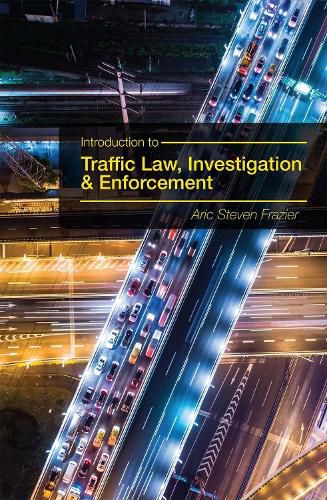Readings Newsletter
Become a Readings Member to make your shopping experience even easier.
Sign in or sign up for free!
You’re not far away from qualifying for FREE standard shipping within Australia
You’ve qualified for FREE standard shipping within Australia
The cart is loading…






Designed to serve as a comprehensive guide, Introduction to Traffic Law, Investigation, and Enforcement equips law enforcement officials with the vital knowledge they need to confidently and successfully investigate and enforce traffic laws.
In Unit 1 of the text, students develop foundational knowledge regarding common traffic rules, including current licensing and registration laws, and moving, non-moving, and federal motor carrier regulations. Unit 2 explores methods used to enforce traffic codes, familiarizing readers with the proper preparation of traffic tickets, the use of speed detection devices, the application of field sobriety tests, and more. Students are introduced to accident investigation processes and procedures in Unit 3, covering both basic and advanced topics, from the completion of an accident report form to analyzing an accident reconstruction to determine its cause. In the final unit, readers develop an understanding of why traffic management programs are implemented and evaluated, as well as methods of supervision and ways to interpret traffic data.
Introduction to Traffic Law, Investigation, and Enforcement is an ideal textbook for courses in traffic law, policing, and law enforcement.
$9.00 standard shipping within Australia
FREE standard shipping within Australia for orders over $100.00
Express & International shipping calculated at checkout
Designed to serve as a comprehensive guide, Introduction to Traffic Law, Investigation, and Enforcement equips law enforcement officials with the vital knowledge they need to confidently and successfully investigate and enforce traffic laws.
In Unit 1 of the text, students develop foundational knowledge regarding common traffic rules, including current licensing and registration laws, and moving, non-moving, and federal motor carrier regulations. Unit 2 explores methods used to enforce traffic codes, familiarizing readers with the proper preparation of traffic tickets, the use of speed detection devices, the application of field sobriety tests, and more. Students are introduced to accident investigation processes and procedures in Unit 3, covering both basic and advanced topics, from the completion of an accident report form to analyzing an accident reconstruction to determine its cause. In the final unit, readers develop an understanding of why traffic management programs are implemented and evaluated, as well as methods of supervision and ways to interpret traffic data.
Introduction to Traffic Law, Investigation, and Enforcement is an ideal textbook for courses in traffic law, policing, and law enforcement.